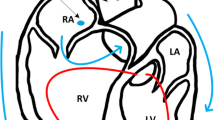Summary
The aim of this paper is to consider the advantages of using isolated heart preparations in studies designed to investigate the effect of hypoxia or ischaemia on myocardial cells. After a brief description of the two most frequently used experimental models of perfused hearts, namely the Langendorff preparation and the working heart preparation, some of the various methods used to induce hypoxia or ischaemia are described, as well as some of the possible techniques allowing to assess metabolic alterations occurring in these pathological situations. After discussing the limitations and advantages specific to the Langendorff and working heart preparations, the suitability of isolated heart models in studies on myocardial protection is then considered. To illustrate this point, the effect of intravenous administration of the slow calcium channel blocker bepridil (5 mg · kg−1) on post-ischaemic recovery of cardiac function and metabolism after global normothermic ischaemia of the isolated heart is reported. It is concluded that isolated heart preparations allow a fine control of experimental conditions with the advantage that functional and metabolic measurements can be easily made.
Similar content being viewed by others
References
Bajusz E, Jasmin G (1964) Histochemical studies on the myocardium following experimental interference with coronary circulation in the rat. Acta Histochem 18:222–237
de Kock A, Lochner A, Kotze JCN, Gevers W (1978) The hypoxic, low-flow perfused rat heart: characterization as a model of global ischaemia. Basic Res Cardiol 73:506–522
Edlund A, Wennmalm A (1981) Oxygen consumption in rabbit Langendorff hearts perfused with a saline medium. Acta Physiol Scand 113:117–122
Good C, Kramer H, Somogyi M (1933) The dertermination of glycogen. J. Biol Chem 100:485
Good NE, Winget GD, Winter W, Connolly TN, Izawa S, Singh RMM (1966) Hydrogen ion buffers for biological research. Biochemistry 5:467–477
Harmsen E, de Tombe PPh, de Jong JW (1982) Simultaneous determination of myocardial adenine nucleotides and creatine phosphate by high-performance liquid chromatography. J Chromat 230:131–136
Hearse DJ, Humphrey SM, Bullock GR (1979) Reoxygenation, reperfusion and the calcium paradox: studies of cellular damage and enzyme release. In: Hearse DJ, de Leiris J (eds) Enzymes in Cardiology: Diagnosis and Research. John Wiley, Chichester, pp 417–444.
Jennings RB, Ganotte CE, Reimer KA (1975) Ischemic tissue injury. Amer J Pathol 81:179–198
Jeungling E, Kammermeier H (1980) Rapid assay of adenine nucleotides or creatine compounds in extracts of cardiac tissue by paired-ion-reverse-phase high-performance liquid chromotography. Annal Biochem 102:358–361
Kannengiesser GJ, Lubbe WF, Opie LH (1975) Experimental myocardial infarction with left ventricular failure in the isolated perfused rat heart. Effects of isoproterenol and pacing. J Mol Cell Cardiol 7:135–151
Kobayashi K, Neely JR (1979) Control of maximum rates of glycolysis in rat cardiac muscle. Circ Res 44:166–175
Langendorff O (1895) Untersuchungen am überlebenden Säugertierherzen. Pflügers Archiv 61:291–332
Lowe JE, Hawkins HK, Jennings RB (1978) Relationship between depletion of high energy phosphate compounds and lethal ischemic myocardial injury. Surg For 29:247–250
Manning AS, Hearse DJ, Dennis SC, Bullock GR, Coltart DJ (1980) Myocardial ischaemia: an isolated, globally perfused rat heart model for metabolic and pharmacological studies. Europ J Cardiol 11:1–21
Mattiazi AR, Cingolani HE, Gonzales NC (1972) Primary negative inotropic effect of tris (hydroxymethyl) aminomethane. Amer J Physiol 222:10–15
Moravec J, Corsin A, Owen P, Opie LH (1974) Effect of increased aortic perfusion pressure on fluorescent emission of the isolated rat heart. J Mol Cell Cardiol 6:187–200
Neely JR, Liebermeister H, Battersby EJ, Morgan HE (1967) Effect of pressure development on oxygen consumption by isolated rat hearts. Amer J Physiol 212:804–814
Neely JR, Rovetto MJ, Whitmer JT, Morgan HE (1973) Effects of ischaemia on function and metabolism of the isolated working rat heart. Amer J Physiol 225:651–658
Neely JR, Whitmer JT, Mochizuki S (1976) Effects of mechanical activity and hormones on myocardial glucose and fatty acid utilization. Circ Res 38(suppl 1):22–29
Opie LH, Mansford KRL, Owen P (1971) Effect of increased heart work on glycolysis and adenine nucleotide in the perfused heart of normal and diabetic rats. Biochem J 124:475–490
Opie LH, Owen P (1975) Assessment of mitochondrial free NAD+/NADH ratios and oxaloacetate concentration during increased mechanical work in isolated perfused rat heart during production or uptake of ketone bodies. Biochem J 148:403–415
Parratt JR, Marshall RJ, Ledingham IMcA (1980) Interventions for improving blood flow, oxygen availability and the balance between oxygen supply and demand in the acutely ischaemic myocardium. J Physiol (Paris) 76:791–803
Ross BD (1972) 5. Heart and skeletal muscle. In: Perfusion Techniques in Biochemistry: A Laboratory Manual in the Use of Isolated Perfused Organs in Biochemical Experimentation. pp 258–320. Oxford University (Clarendon) Press, Oxford
Ross BD (1972) 5. Heart and skeletal muscle. In: Perfusion Techniques in Biochemistry: A Laboratory Manual in the Use of Isolated Perfused Organs in Biochemical Experimentation. Oxford University (Clarendon) Press, Oxford, pp 258–320
Weisfeldt ML, Shock NW (1970) Effect of perfusion pressure on coronary flow and oxygen usage of nonworking heart. Amer J Physiol 218:95–101
Williamson JR, Ford C, Illingworth J, Safer B (1976) Coordination of citric acid cycle activity with electron transport flux. Circ Res 38(suppl 1):39–48
Wollenberger A, Ristau O, Schoffa G (1960) Eine einfache Technik der extremschnellen Abkühlung größerer Gewebestücke. Pflügers Archiv 270:399–412
Zimmer HG, Gerlach E (1974) Effect of beta-adrenergic stimulation on myocardial adenine nucleotide metabolism. Circ Res 35:636–643
Author information
Authors and Affiliations
Rights and permissions
About this article
Cite this article
de Leiris, J., Harding, D.P. & Pestre, S. The isolated perfused rat heart: A model for studying myocardial hypoxia or ischaemia. Basic Res Cardiol 79, 313–321 (1984). https://doi.org/10.1007/BF01908032
Received:
Issue Date:
DOI: https://doi.org/10.1007/BF01908032




